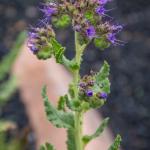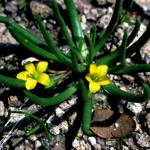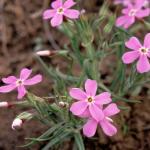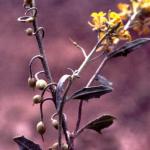S2
Imperiled
Pedicularis parryi ssp. mogollonica
Carr (Brittonia 23:280 - 291, 1971) distinguishes subsp. mogollonica from subsp. parryi by its taller stems and more numerous and larger cauline leaves.
Penstemon superbus (Superb Beardtongue)
Plants perennial, glaucous (bluish); stems 3-12 dm tall; basal leaves petiolate; cauline leaves cordate-clasping or connate-perfoliate; inflorescence narrow, often more than half plant height, glandular or glabrous; flowers in dense fascicles separat...
Phacelia serrata (Cinder Phacelia)
Annual; herbage strongly glandular and sticky; stems 1-3.4 dm tall, erect, simple or branched at base, with simple setose, hirsute and multicellular glandular hairs; leaves lanceolate, serrate, dentate to shallowly lobed, 1-4 cm long, 0.5-2 cm wide, ...
Phemeranthus humilis (Pinos Altos Flameflower)
Succulent perennial herb; taproot tuberous, roughly globose to broadly napiform, up to 5 cm in diameter (usually less); stems short, usually not extending above the ground surface, terminated by a leafy rosette 5-15 cm in diameter; leaves terete, 3-1...
Phlox caryophylla (Pagosa Phlox)
Perennial; stems from a woody base, up to 20 cm long, soft-hairy; leaves narrow, not exceeding 3 mm wide and 50 mm long; flowers in loose clusters, bright pink to purple; corolla tube about 15 mm long, the lobes 6-10 mm long, 4-6 mm wide; calyx-lobes...
Physaria aurea (Golden Bladderpod)
Biennial or short-lived perennial, usually densely pubescent, the hairs sessile or short-stipitate, simple or forked, 5- to 9-rayed, smooth or finely granular; stems several, erect or the outer ones decumbent or procumbent, simple or sometimes much b...




